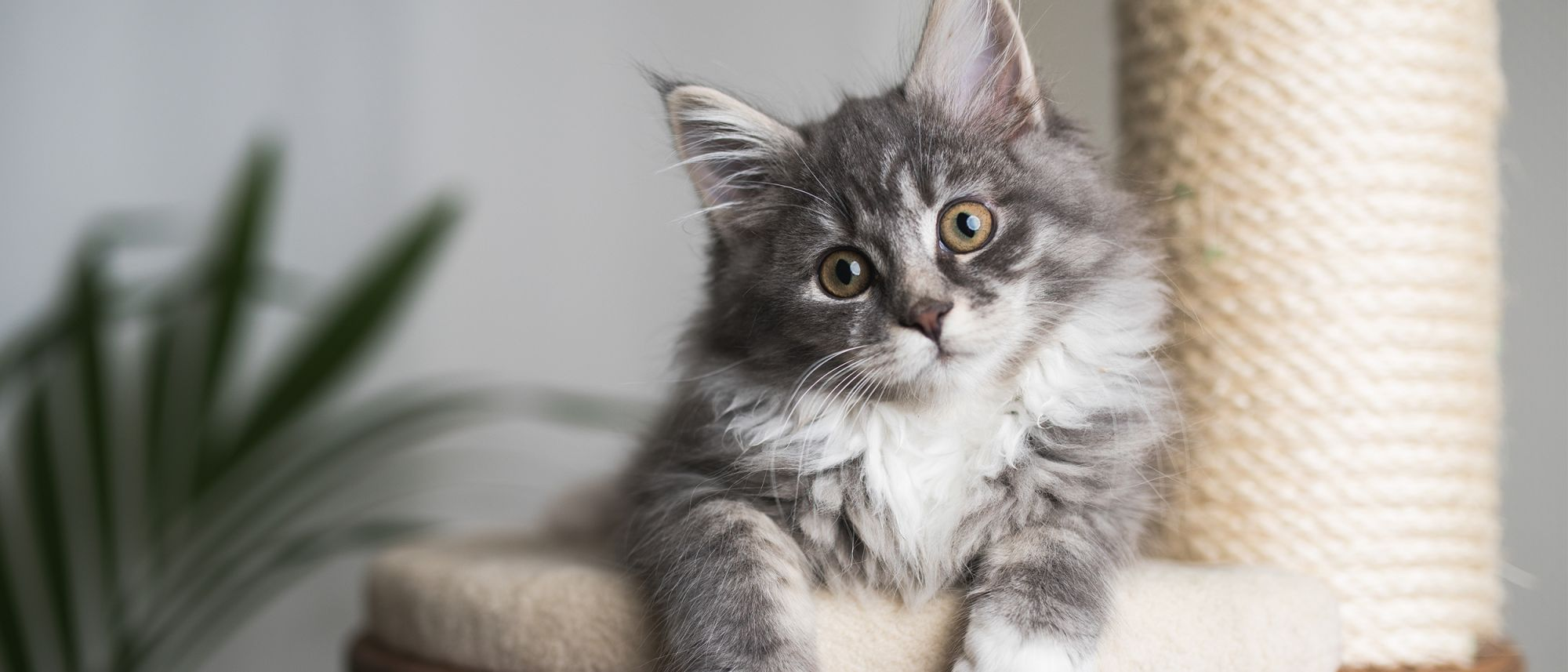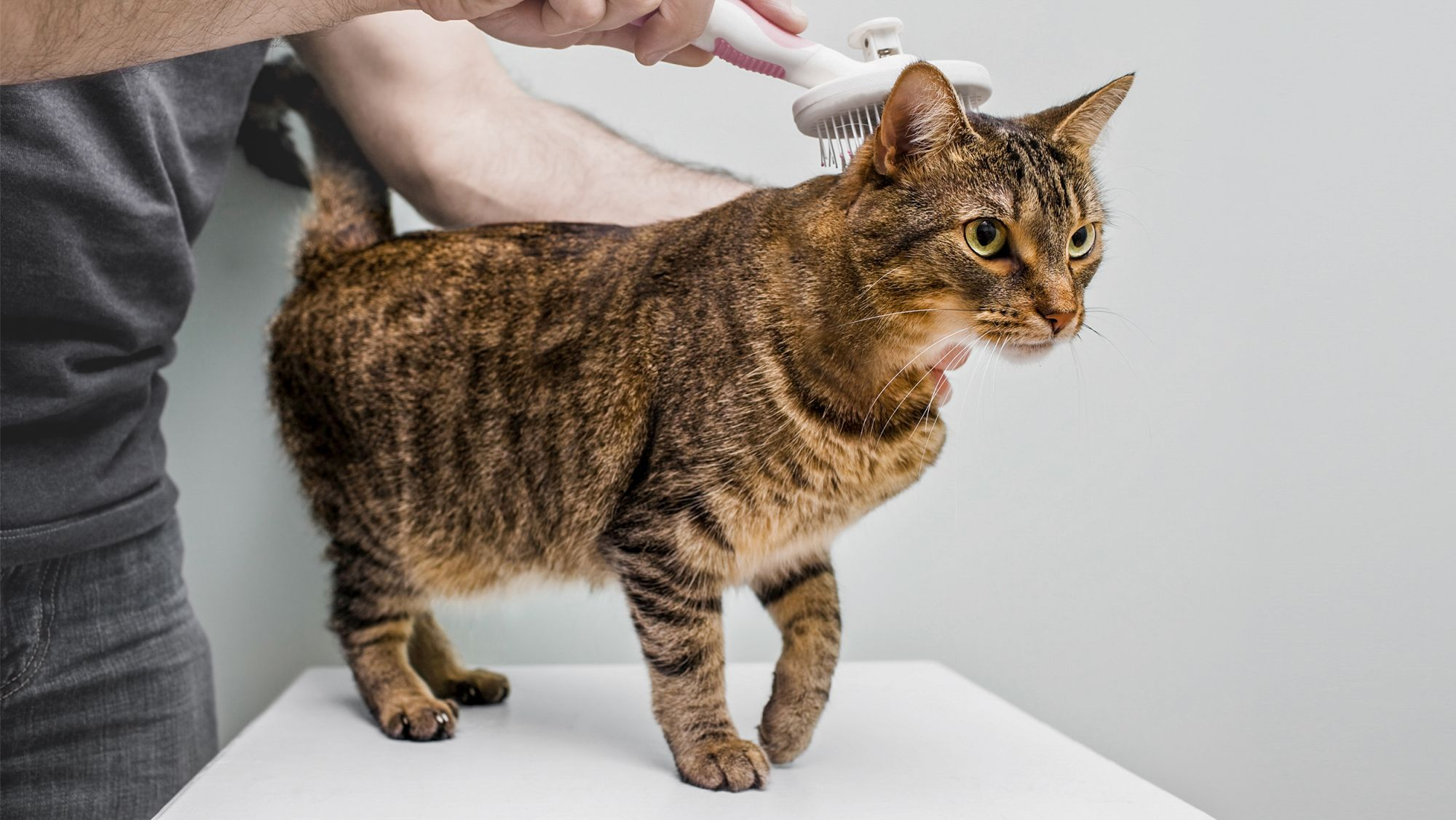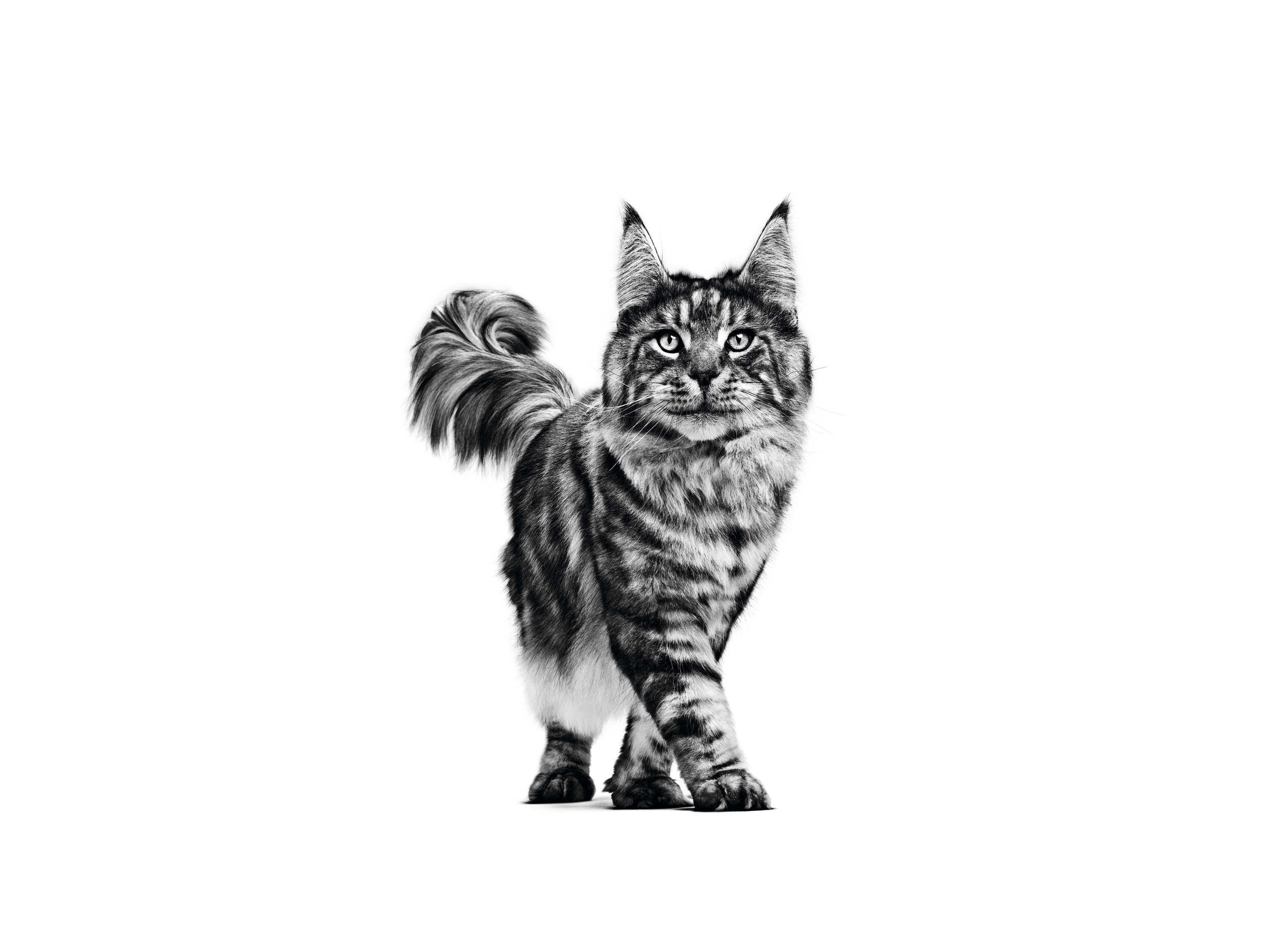How to care for a kitten or cat

Important items
When you first bring your cat home, you will need the basics. These include:
- Baskets: This means comfortable bedding where the kitten or cat will be comfortable and safe. Raise it off the ground, preferably, somewhere where the kitten will feel safe, away from any draughts or areas where there is too much coming and going.
- Litter boxes: This needs to be deep enough and with a small shovel to remove the stool, although not too deep that kittens are dissuaded from using it.
- Water bowls: A bowl of fresh water should be available to your cat at all times. Water fountains are available as an alternative to bowls as cats are known to particularly enjoy the movement and it encourages them to drink more.
- Food bowls: You should ensure you have a small bowl for kibbles, placed far enough away from the water bowl to prevent it getting dirty. Alternatively, a feeding puzzle can be introduced, especially if you have an indoor car, to provide mental and physical stimulation, fulfilling their natural hunting instinct. With these puzzles, a transition period is necessary for your cat to learn how to use them.
- A cat tree: An accessory that is both fun and useful for your cat and will allow them to scratch, climb and hide safely, and will contribute to the positive wellbeing of your cat by respecting their natural instincts.
It's recommended to get more than one of each item and disperse them around the home to offer your new cat choice and allow them to find a quiet space away from visitors or loud noises, should they need to.
Environment
Environment is an important part of the health and wellbeing of your cat. A favourable environment is one in which the cat can become safely socialised without too many problems, and that helps them get used to the people and the things around them.
Even when it is very young, your cat will organise and mark out its territory. This is where it will sleep, play, hunt, feed, hide, climb and be cuddled. In its home, your cat organises its life around four different areas which you need to respect to avoid behaviour problems, particularly for indoor cats.
- Feeding areas: These must be in quiet areas, away from its litter box and from your own eating area. It is better to avoid using the dining room or areas where they may be disturbed and allow your cat plenty of space when eating.
- Resting area: The place will vary in the course of the day depending on the sunlight and sources of heat. By nature, cats like to sleep up high, and will often choose the spot that suits them most, so make sure they have plenty of free space to choose from.
- Cleaning area: The litter box must be placed somewhere quiet and permanently accessible by your cat, away from its food bowl and places where there is a lot of coming and going. Be careful to avoid any source of stress: cats have been known to become unclean because the litter box was installed next to the washing machine. At least one litter tray per cat, plus one spare, is recommended to give each cat plenty of choice and avoid these issues.
- Play area: This is your cat’s largest living space and relaxation area. It must be a place where it can race around, hide or perch high up. Cat trees are excellent accessories to encourage this activity and support your cat's health and wellbeing.
Exercise
Cats who stay indoors need plenty of activity to remain physically and mentally stimulated. That means:
- Lots of toys, rotated from time to time to keep them interested, things to climb and hide in, and regular playtimes with the family every day
- Because they groom more and tend to be more sedentary, indoor cats, especially those with long hair, need a diet which can help with hairballs and reflects their lower activity levels
- You may not welcome the scars your cat can leave on your furniture or walls. However, scratching is a natural behaviour and it is important to give your cat places to express this. Plan to have at least one scratching post
Feeding
For domestic cats, food intake depends on several factors. Cats prefer eating in a calm space, away from sight and predators, with a clear route of escape.
Only high quality foods, specifically prepared for cats can be guaranteed to provide all the nutrients they need to stay healthy, whatever their age, breed, lifestyle or sensitivities.
- While we benefit from variety in our diet, frequent and continuous variation is not suited to a cat’s digestion
- Feeding puzzles are an excellent way to mentally entertain your cat and encourage them to work for their food and exercise their hunting instincts
- The hunting behaviour plays a large role in how cats eat, which is why they tend to consume multiple small meals throughout the day rather than in one or two large feeds
- Cats have a very high requirement for protein including a number of essential amino acids, one of which is taurine, found naturally only in animal tissue
- Fat is an important energy source for cats, with a greater proportion of daily calories provided by fats than is recommended for humans
- Cats also have very particular vitamin and mineral requirements such as Vitamin D which they can only source it from their diet
- As a newborn, your kitten’s digestive tract was perfectly suited to digesting milk specifically formulated for kittens, but their digestive capacities will change and by the time they come into adulthood they will no longer be able to digest lactose

Grooming
Apart from looking good, a brushed coat contains less dead hair, meaning less is available to be removed by your cat while grooming. This has its benefits as with grooming activity constituting an average of 30% of your cat’s time, it leads to ingestion of shed hair, leading to hairballs and sometimes digestive issues.
- Cats with longer hair such as the Persian require careful untangling of the coat with a good-quality comb every day.
- In short and flat hair cats (such as the Siamese or the Abyssinian), a few firm strokes of the hand is sometimes all that’s needed.
- Passing a soft brush through the coat once a week is recommended for a medium- length coat or hair with a thick undercoat (such as in the Maine Coon or Exotic Shorthair).
Dental
Good oral health starts off when your kitten is young.
- When they come home, kittens will still have their milk teeth. These baby teeth are quite fragile, so kibble needs to be softer and easier to break open than an older cat’s.
- Some wet foods have been especially formulated for kittens with an excellent texture, adapted to their sensitive teeth
- Toothbrushing is the gold standard for oral care, and using a special cat toothbrush and veterinary toothpaste is recommended.
Health
The health and wellbeing of your cat involves a wide variety of factors, from preventative vaccinations and tablets to insurance and even whether or not to neuter your pet. Some of these costs are isolated and others need to be considered as part of an ongoing budget alongside nutrition and grooming.
- Cats are routinely vaccinated against feline panleukopaenia virus, feline herpesvirus and feline calicicirus. The vaccination course consists of two injections given three to four weeks apart. Your cat may have already had their first injection before they came to you as the first dose can be given from the age of about nine weeks
- Microchipping is the painless insertion of a microchip under the skin on the neck, and means that any vet or cat rescue organisation can ‘read’ the chip with a handheld scanner. Your vet can perform the procedure at any of your routine appointments
- It is important to prevent your cat from getting fleas, worms or ticks. A good breeder will have started an anti-parasite programme from the very beginning of the cat’s life and most rescue centres will also start a good worming and flea treatment regime for all of the animals in their care. It's important that you ask the person you are getting your kitten or cat from what treatments your new cat has had in the past
- Neutering is one of the most responsible decisions any pet owner can make. Cats have traditionally been neutered any time from around six months of age
- It's important to arrange annual check-ups with your vet to help prevent any health issues and monitor weight and behavioural changes
Training
The majority of a kitten’s education takes place during the first six months of their life. Most behaviour is acquired in the first three months, thanks to the predominant role of their mother and siblings.
That means that when you bring a cat home, you have a limited contribution to make to their basic education, but you still have responsibilities. Your job is to complete their training in their new environment and to address undesirable behaviour.
Insurance
Insurance offers peace of mind that you will be able to provide the care your cat needs should a crisis happen.
Pet insurers offer different levels of cover, and prices vary according to your cat’s age, breed or size and type, as well as your location.
Find the right cover for you and your kitten by:
- Using the internet to compare packages
- Ask your vet
- Look in pet magazines
It can be overwhelming at first to prepare for all the things needed to take care of your cat or kitten, but by starting properly you will help them adjust to their new home and maintain a happy and healthy life.
Learn more about cat breeds

Like & share this page